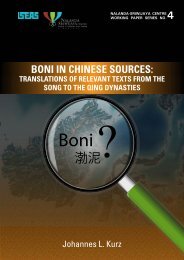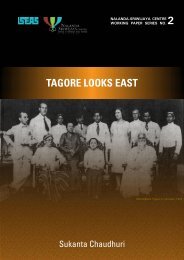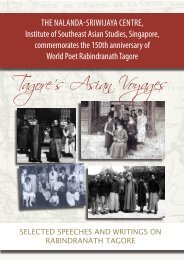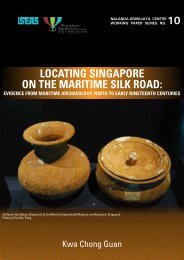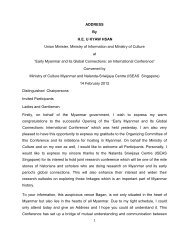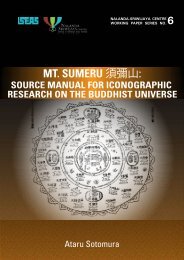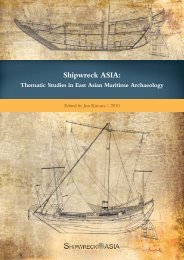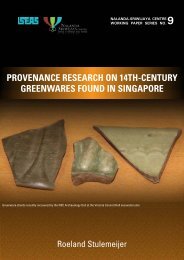You also want an ePaper? Increase the reach of your titles
YUMPU automatically turns print PDFs into web optimized ePapers that Google loves.
A Ninth-Century Arab or Indian<br />
Shipwreck in Indonesia<br />
14 Bronson 1996, 188.<br />
stacked on top of each other. The rims and walls<br />
of both have suffered badly, but the base, while<br />
extremely fragile, often remains intact. Designs<br />
featured on the bases include circling lions, fish,<br />
peacocks, birds in flight and dragons (cf. p. 108<br />
figs 11a, b; p. 137, fig. 1; p. 141, fig. 7). A number<br />
of silver covered boxes (cf. nos 12–18) were also<br />
found, including a large one that contained four<br />
small boxes inside, as well as a large silver flask<br />
with a pivoting handle (no. 21).<br />
Chinese bronze mirrors comprise another high<br />
value item that was probably intended for private<br />
trade. Twenty-nine were recovered (nos 22–37a,<br />
b), two with the famous lion-and-grape design<br />
of the Tang dynasty (nos 26, 27).<br />
Three copper alloy scale weights were re covered,<br />
along with a scale bar with decorated ends (nos<br />
300 a–c, 301).<br />
One tiny blue glass bottle was excavated (no.<br />
319), very similar to a ninth- to tenth-century<br />
Middle Eastern bottle found at Laem Pho, Thailand.<br />
14 Strangely, this bottle, and two earthenware<br />
jars (nos 292, 293) are the only artefacts that are<br />
of possible Middle Eastern origin (cf. p. 659).<br />
Fig. 35 Star anis having just been removed from a green-glazed jar<br />
(Photograph: M. <strong>Flecker</strong>).<br />
28 A Ninth-Century Arab or Indian Shipwreck in Indonesia





